Excel Filter
Excel Filter
Data can be sorted and hidden using filters. It facilitates data analysis.
Note: Filter can be applied and disabled, just like table formatting.
You can access the menu from the Data area of the navigation bar or from the standard Ribbon view.
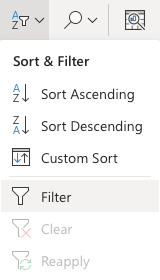
Applying Filter
Applying a filter involves choosing a range and then selecting the Filter command.
When using filters, it’s crucial to have a row of headers. In order to make the data comprehensible, headers are helpful.
Note: A range of filters is applied to the top row.
Row 1 is the devoted row, as seen in the sample below.
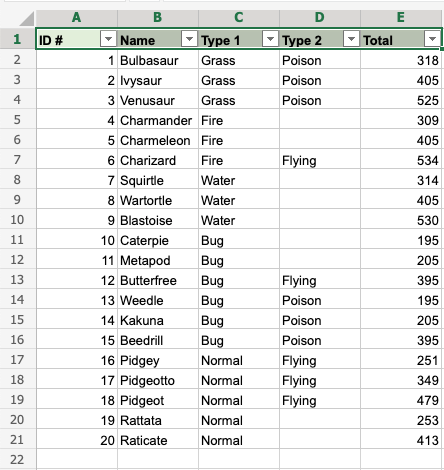
Let’s apply filters to the data set, step by step.
- Select range A1:E1

2. Click the Sort & Filter menu
3. Click the Filter command

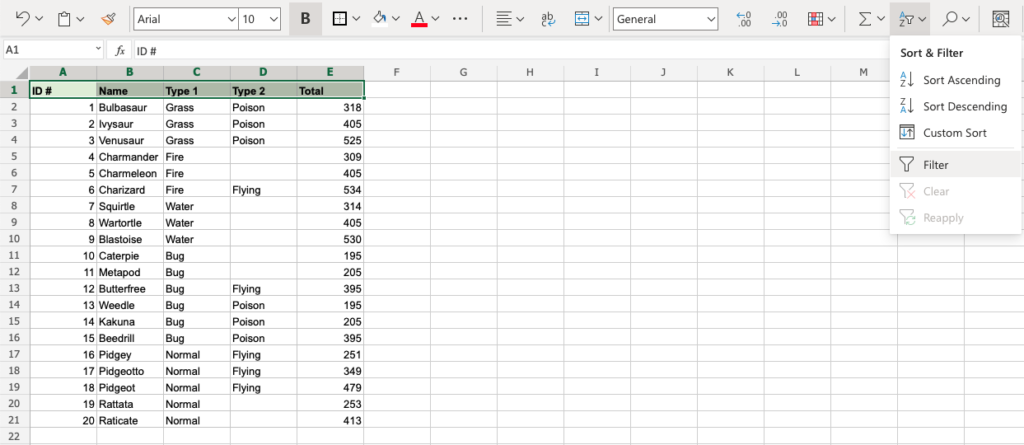
There are now more buttons on the top row of cells. This shows that the filter was applied successfully. To access the various Sort & Filter options, click the buttons.
A Non-Working Example
on show what happens, let’s remove row 1 (the header row) and apply filters on the newly created row 1.

The header row has been replaced with the applied filter. Setting aside a header row just for the filter is crucial.
Filter options
Sorting and filtering are possible with the filter settings.
While sorting and filtering, applying a filter maintains the relationship between the columns.
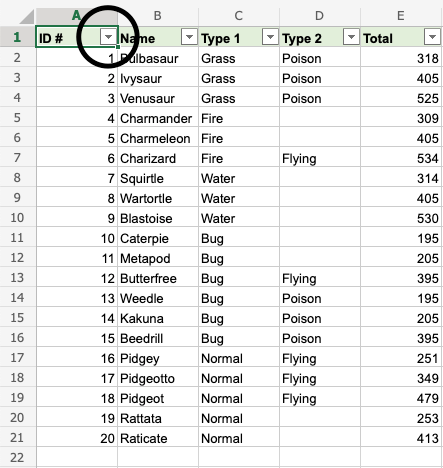
Clicking the options button opens the menu.
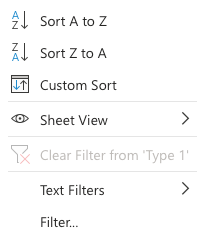
Sorting
It is possible to sort ranges while maintaining the relationship between the columns.
Arrange in ascending order (A-Z), smallest to largest.
Z-A sorting, which goes from largest to smallest, is descending.
Sorting is covered in more detail in an earlier chapter.
Filtering
Data can be sorted and hidden using filters.
Choosing the data you wish to view or not is useful for analysis.
Example Filter
Use the filter option to filter on Pokemon that is Type 1, Bug.

Step by step
Click the drop down menu on C1 (
) and choose the Filter option. This is the Column which holds the Type 1 data.
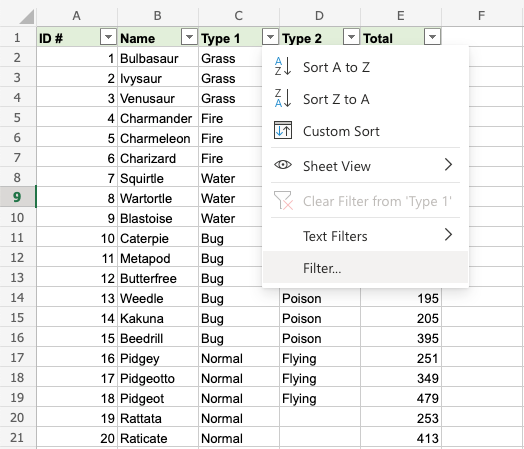
The various categories in that column Grass, Fire, Water, and so forth are referred to as “items” in this instance.
By default, all of the items are selected. The checked items are the ones that are shown. Uncheck to hide.
2. Uncheck all items, except Bug, which is the type that we want to show.

3. Click OK
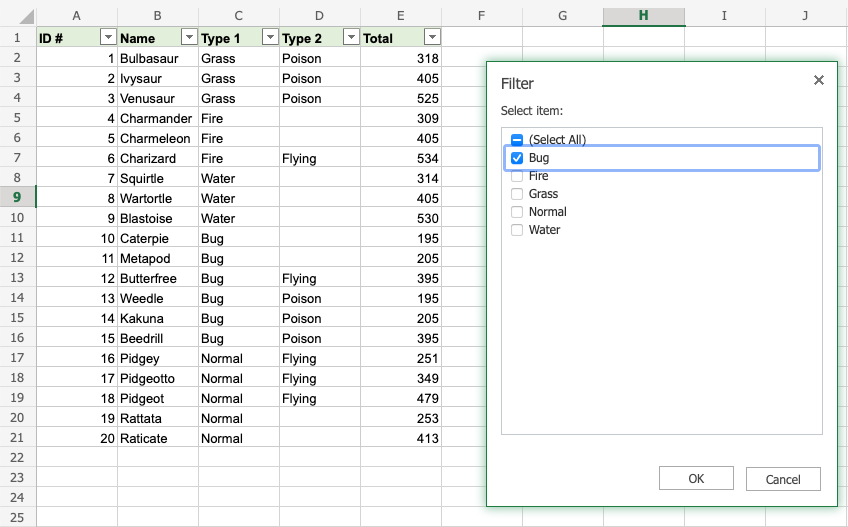
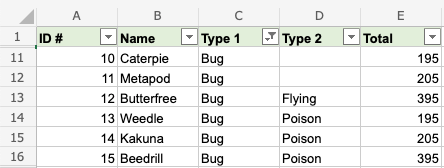
Well done! Type 1 Bug was successful in sorting the range. Every Pokemon displayed is a Bug type.
The unchecked rows are not removed; rather, they are buried.
This can be understood by examining the row numbers. Jumping from 1 to 11 and 16 to 22 are the numbers. Between are rows that are hidden.

Note: The rows will reappear when you check the items.
Another Example
Use the filter option to filter the Pokemons which have Type 1, Bug and Type 2, Poison.
- Click the filter option in D1
- Uncheck all items except Poison
- click OK

That’s right on the money! The range has been divided into two categories: Type 1, Bug and Type 2 Poison. The filter option is useful for simplifying the analysis of ranges.
